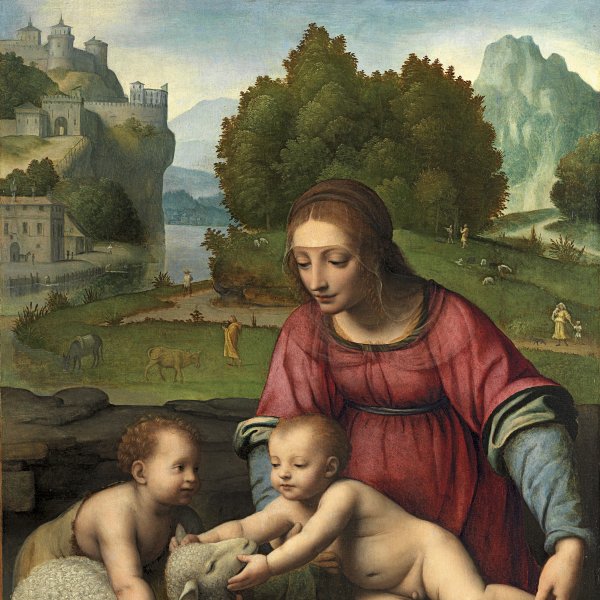Bernardino Luini
Luini was an Italian painter and draughtsman of the generation of Lombard painters active around 1500 that was influenced by Leonardo and Raphael, combining the innovations of the High Renaissance with elements of the Milanese tradition to create the Lombard Renaissance school.
The scarcity of documents on Luini’s life has made it difficult to establish the chronology of his works. According to Lomazzo in his Trattato dell’arte de la pittura, scultura et architectura (1585), Luini trained with Gian Stefano Scotto, a little-known artist who worked in Milan cathedral between 1485 and 1520. Vasari mentions Luini among Leonardo’s Milanese followers. In Di Lucio Vitruvio Pollione de architectura libiri dece of 1521, Cesariano mentions a trip by Luini to Rome, although he does not provide a date. There he would undoubtedly have seen the work of Raphael, which he seems to have known. Luini’s work also reveals the influence of other Milanese painters such as Foppa, Bergognone, Solario, Bramantino and Zenale.
His first known work is the polyptych with The Virgin and Child, The Annunciation and God the Father in the parish church of Maggianico, Como, painted shortly after 1510. It reveals the principal features of his style, namely the use of archaic elements derived from 15th-century art with the innovations of Leonardo and Raphael. Between 1529 and 1532 Luini executed his most ambitious work, a monumental fresco on the theme of Christ’s Passion, painted for the church of Santa Maria degli Angeli in Lugano. Among the artist’s admirers was Cardinal Federico Borromeo, who owned the largest collection of his works and commissioned copies of numerous others. Luini’s paintings were popular among critics and collectors from the 18th to the late 19th century.





